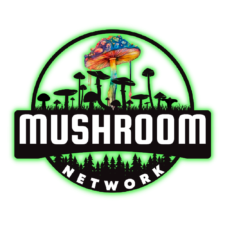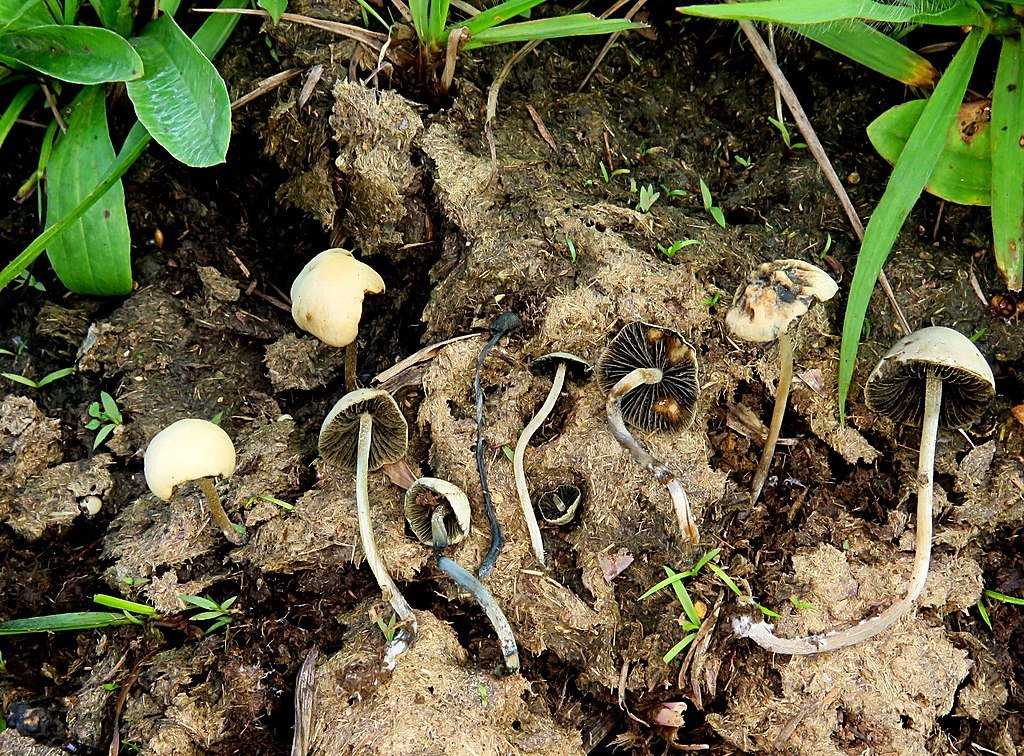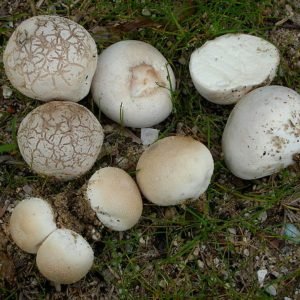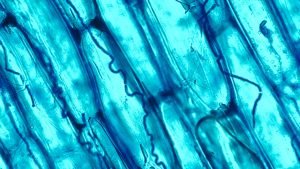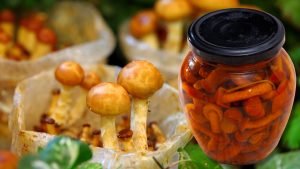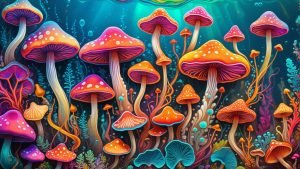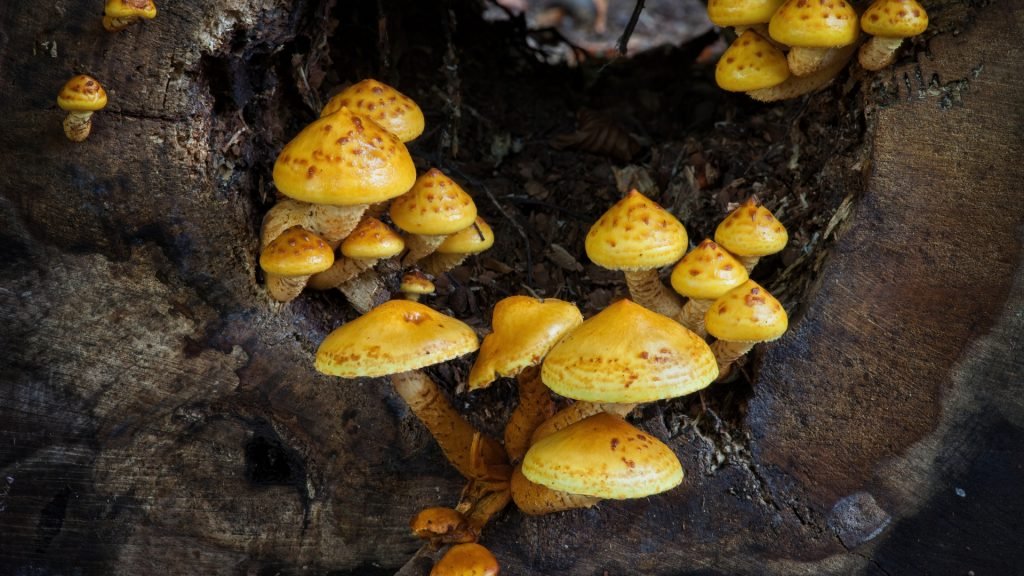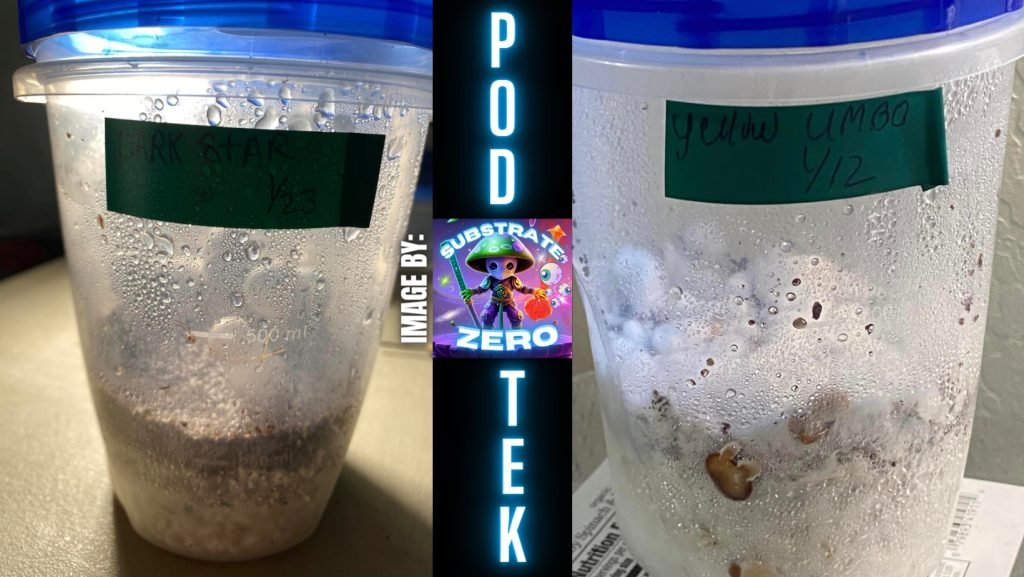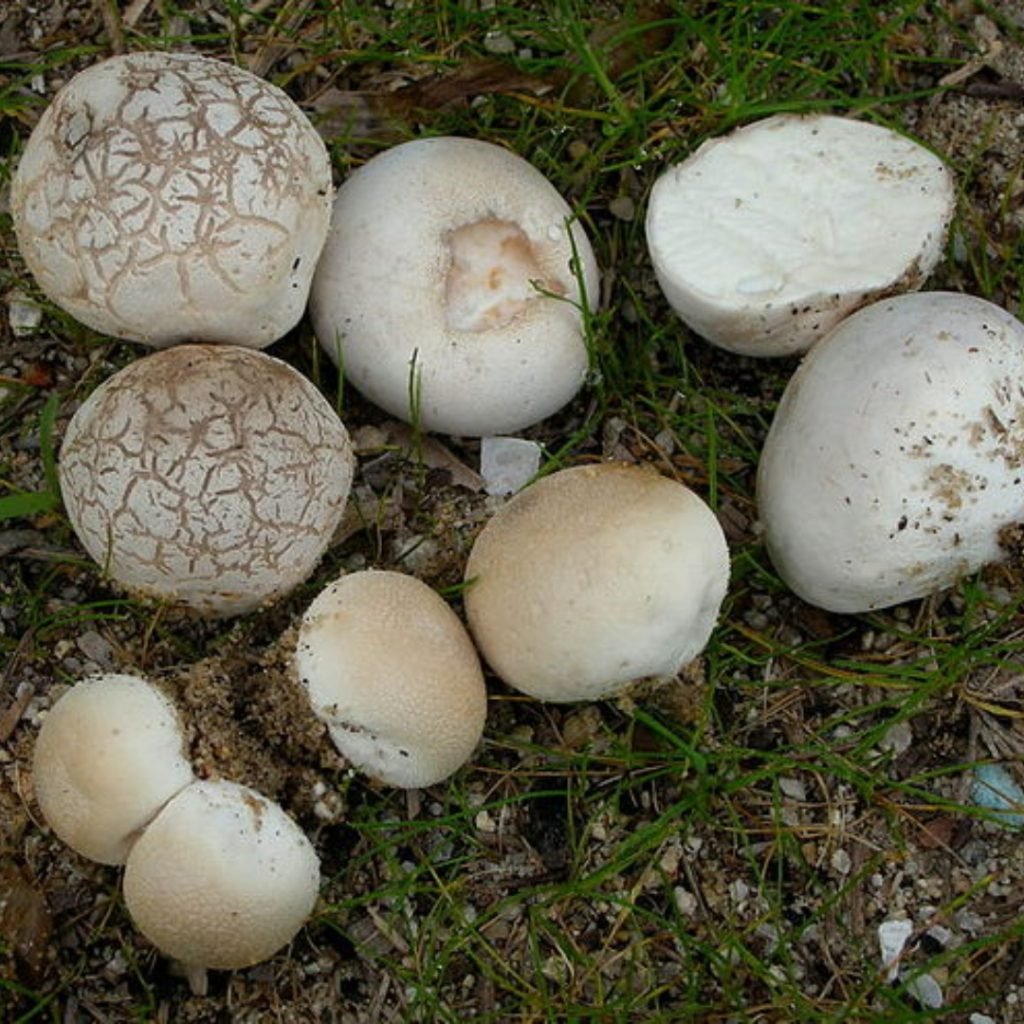Welcome, fellow mycophiles and curious minds, to the enchanting world of Blue Meanies! As we delve into the fascinating aspects of Panaeolus Copelandia Cyanescens, let’s embark on a journey through science and wonder, unveiling the secrets of these remarkable fungi.
SCIENTIFIC NAME:
(Panaeolus Copelandia Cyanescens)
COMMON NAME(S):
Blue Meanies | Blueys | Copelandia Cyanescens
I-NAME:
BLUM
Founding Mycologist/Discovered By:
-Unknown-
If you have information, please help us enrich our database!

RECOMMENDED TEMPERATURES
Colonizing Temps:75° – 80°F | Fruiting Temps:70° – 75°F |
SPORE COLOR:
JET BLACK
Embark on an exploration of the Blue Meanies, a strain revered in the mycological community for its potent effects and distinctive characteristics. This psychedelic mushroom, native to tropical and subtropical climates, beckons with its intense blue bruising, a telltale sign of its potency.
DESCRIPTION:
Blue Meanies stand out with their small to medium size, conical to bell-shaped caps, and thin stems. Their most notable feature is the prominent blue bruising that occurs upon handling, a result of their high psilocin content. The caps are light brown but turn bluer with age or when damaged.
INTENDED USES:

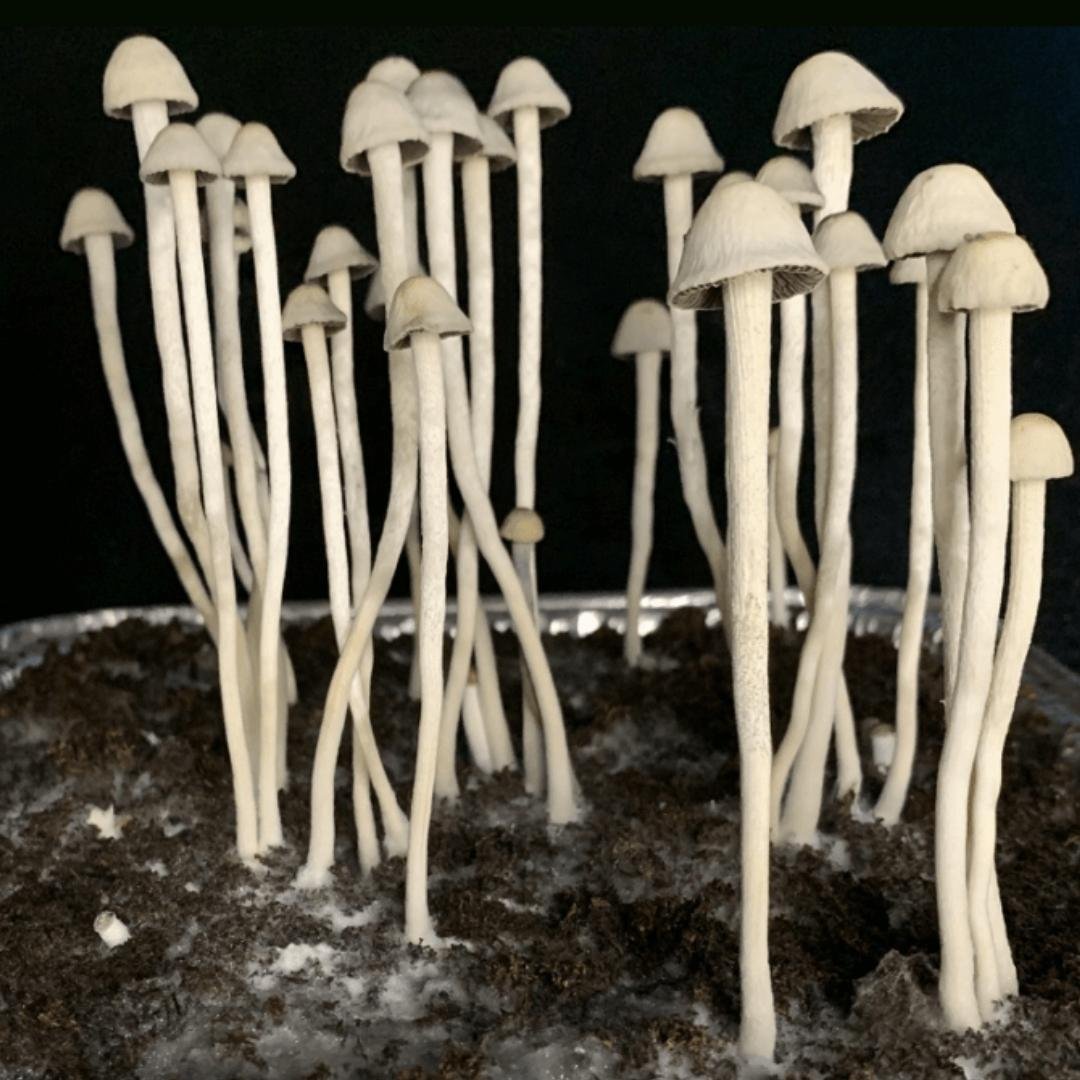
HABITAT AND DISTRIBUTION:
Naturally occurring in warm, humid climates, often found in dung-rich pastures, but never directly on dung. Geographically spread across Central America, parts of North America, and Australia.
ECOLOGICAL ROLE:
This species plays a crucial role in nutrient cycling in its natural habitat, breaking down organic matter and contributing to soil health. Their preference for dung-rich environments indicates a symbiotic relationship with grazing animals.
GROWTH AND CULTIVATION:
Cultivating Panaeolus Copelandia Cyanescens requires expertise due to their need for specific humidity and temperature conditions. They thrive on nutrient-rich substrates but are more sensitive to environmental factors than some other psilocybin-containing species.
No posts found!
HISTORICAL & CULTURAL INFO:
In regions where they naturally occur, Blue Meanies have been part of indigenous rituals and healing practices for centuries. Modern interest in these mushrooms has surged due to their notable potency and the growing curiosity in psychedelic therapy.
GENETIC LINEAGE/HISTORY:
The exact genetic lineage of Panaeolus Copelandia Cyanescens is still being studied, with ongoing research to understand their evolution and potent biochemical makeup.
No posts found!
CHEMICAL COMPOSITION:
Rich in psilocybin and psilocin, they are known for producing a profound psychedelic experience. The specific concentration of these compounds varies, making them a subject of interest in psychopharmacology.
MEDICAL PROPERTIES (if applicable):
Emerging research suggests potential benefits in treating depression, anxiety, and PTSD, but more studies are needed. Their use in therapy sessions is being explored, albeit under strict conditions due to their potency.
CULINARY USES (not applicable):
Not applicable for culinary purposes due to their psychoactive properties.
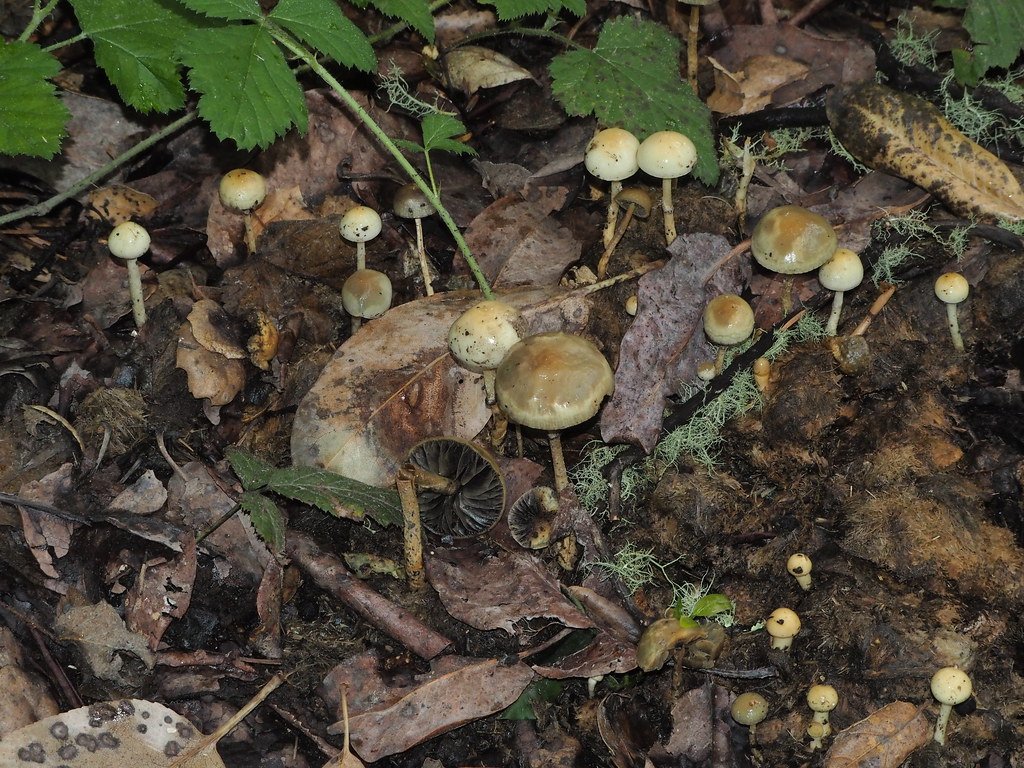
CAUTIONS & WARNINGS:
Panaeolus Copelandia Cyanescens should be handled responsibly and is not for consumption. Its potent effects require caution, and it’s subject to legal restrictions in many areas. It is important to consult a doctor before consuming any mushrooms, especially if you have a pre-existing medical condition or are taking medication.
FINAL CONSIDERATIONS:
Dive into the world of Blue Meanies at the 🍄 Marketplace, where mycology meets mystery. Discover more about these potent mushrooms and their role in both nature and psychedelic research.
Don’t forget to check out the 🍄 Mushroom Network’s Marketplace to see what’s available. But hurry, our shelves are constantly evolving, and you wouldn’t want to miss out on this wonderful mushroom. Join our growing network of Patrons, Genetics, and Mycologist Vendors only on the 🍄 Mushroom Network!
No posts found!
No posts found!
FAQs:
Their higher psilocin content and distinctive blue bruising set them apart.
While potential exists, caution is advised due to their potency.
They are known for strong, visual psychedelic experiences.
Yes! There is a PC-Strain that is called Blue Meanie [BM]
MYCO-CLOSINGS:
Thank you for joining us on this fascinating exploration of Blue Meanies. Remember, in the realm of fungi, there’s always more to discover – stay curious and respectful of these powerful natural wonders!
Related Articles:
Mushrooms of the Tropics: Spotlight on Blue Meanies
About This Article: 🍄 Dive into the mystical world of Blue Meanies (Panaeolus cyanescens) with...
Read More...Blue Meanies (Panaeolus Copelandia Cyanescens)
Welcome, fellow mycophiles and curious minds, to the enchanting world of Blue Meanies! As we...
Read More...The Pop Culture Phenomenon of Psychedelic Fungi: Reflections and Representations
Psychedelic fungi, nature’s clandestine gem, have long captivated humanity’s curiosity, intertwining with our culture, art,...
Read More...Other Mushroom Species To Research:
Black Reishi (Ganoderma Sinense)
Scientific Name: Ganoderma Sinense COMMON NAME(S): Black Reishi | Black Lingzhi |Black Lucid Ganoderma |...
Read More...Blue Meanies (Panaeolus Copelandia Cyanescens)
Welcome, fellow mycophiles and curious minds, to the enchanting world of Blue Meanies! As we...
Read More...Mini-Puffball (Bovista Dermoxantha)
Scientific Name: Bovista Dermoxantha COMMON NAME(S): Mini-Puffball | Small Puffball | Little Puffball Welcome to...
Read More...Artist’s Conk/Bracket (Ganoderma Applanatum)
Greetings, mycology aficionados and natural art enthusiasts! Today, we’re delving into the fascinating world of...
Read More...Other Recommended Reads:
Unraveling the Enigma of Endophytes: Fungi Inside Plants
In the lush green world that surrounds us, a lesser-known symbiosis weaves its intricate, invisible...
Read More...Nameko: Health and Healing: The Medicinal Potential of Nameko Mushrooms
When it comes to the spectrum of medicinal mushrooms, Nameko holds a distinctive place. Treasured...
Read More...The Pop Culture Phenomenon of Psychedelic Fungi: Reflections and Representations
Psychedelic fungi, nature’s clandestine gem, have long captivated humanity’s curiosity, intertwining with our culture, art,...
Read More...Decomposers of the Deep: Underwater Mushrooms
The mysteries of the deep seas are not solely reserved for lost cities and shipwrecks;...
Read More...Whoa there, Spore Sport! 🍄 Looks like you’re not logged in yet. Don’t you know what you’re missing? MYCO-CREDITS! Imagine all the fungal fun you could have. It’s like finding a Morel in May and not picking it. Tragic, right? Log In or Become a Myco-Patron and start racking up those credits. It’s more rewarding than finding a mushroom in your backyard! 🌟🏡
